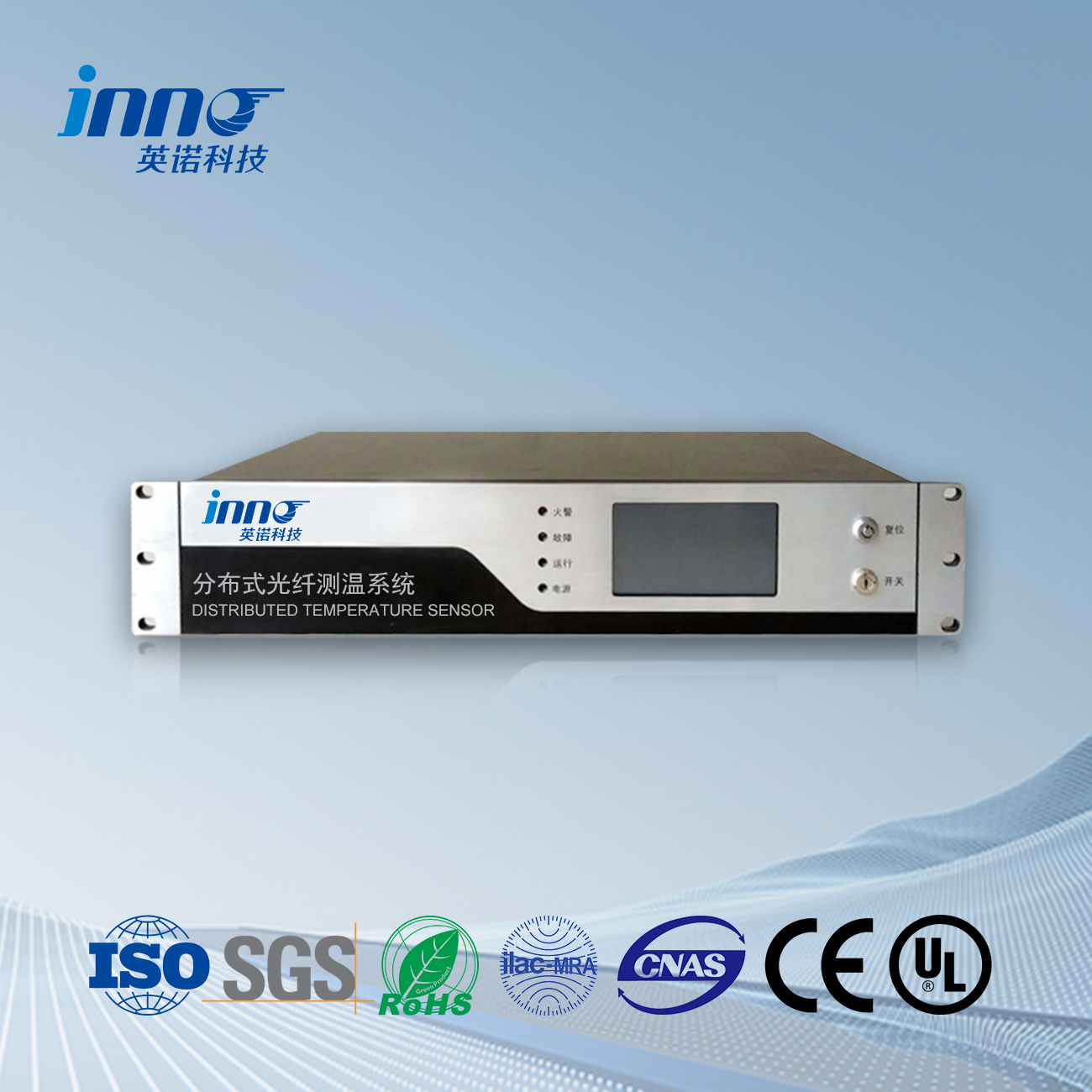ดีทีเอส temperature detector pipeline leakage detection system
Pipeline transmission has many advantages such as economy, efficiency, safety, and stability, and is applied in the transportation of fluids such as oil, natural gas, and water. With the continuous progress of social economy and technology, pipeline laying has been widely used. Pipeline systems are widely used in industrial fields such as petroleum, metallurgy, urban water supply, and natural gas. The issue of pipeline safety protection is also increasingly prominent in front of people. Pipelines are buried underground year-round and are prone to corrosion, fatigue damage, or leakage, which not only causes significant economic losses but also pollutes the environment. เพราะฉะนั้น, studying effective pipeline leak detection techniques is extremely important for ensuring safe transportation of pipelines.
Measuring the temperature around the pipeline to determine whether a leak has occurred is currently a commonly used method. อย่างไรก็ตาม, traditional temperature measurement is a single point measurement method, and monitoring the condition of a pipeline requires the deployment of a large number of temperature sensors, which brings difficulties to construction and maintenance. The fiber optic distributed temperature measurement system is a sensing system developed in recent years for real-time measurement of spatial temperature distribution. Fiber optic is both a transmission medium and a sensing medium, and the temperature effect of backward Raman scattering can be used to measure the temperature of the fiber in real-time; The use of optical time-domain reflection technology can accurately locate measurement points. This system can measure the temperature field distribution over long distances in a short period of time. Due to the small volume of the optical fiber, the measurement process will not affect the distribution of the original temperature field. ในเวลาเดียวกัน, it also has the characteristics of flame prevention, explosion prevention, ความต้านทานการกัดกร่อน, and electromagnetic interference resistance. เพราะฉะนั้น, the optical fiber distributed temperature measurement system has good application prospects in the field of pipeline leakage monitoring technology.
พื้นที่ fiber optic distributed temperature measurement system based on Raman scattering technology is currently widely used as a pipeline leakage monitoring system, which can measure long-distance pipeline routes. ด้วยการพัฒนาของ ไฟเบอร์ออปติกแบบกระจาย temperature measurement (ดีทีเอส) technology in the petroleum industry, DTS has been able to achieve the following in the petroleum industry: measuring temperature profiles, identifying production fluids, determining the position of liquid and gas outlet, monitoring the working status of gas lift valves, and judging the judgment
Multiple applications such as crack location. หลักการหลักของเทคโนโลยี DTS คือการใช้หลักการสะท้อนแสงของใยแก้วนําแสงและความไวต่ออุณหภูมิของการกระเจิงแบบโรมันย้อนกลับของใยแก้วนําแสง, อาศัยความสัมพันธ์เชิงปริมาณระหว่างการแพร่กระจายของแสงในใยแก้วนําแสงและการเปลี่ยนแปลงอุณหภูมิรอบตัวกลางใยแก้วนําแสงเพื่อกําหนดอุณหภูมิที่ตําแหน่งของตัวกลางใยแก้วนําแสง. เนื่องจากลักษณะของการป้องกันการรบกวนทางแม่เหล็กไฟฟ้า, ความต้านทานการกัดกร่อน, ความแม่นยําสูง, real-time monitoring of temperature, stable signal, and low cost, DTS technology is suitable for underground temperature profile monitoring in the petroleum industry.
DTS temperature measurement system
With the rapid development of fiber optic technology, the application of DTS temperature measurement system in the field of fire alarm has become increasingly mature. It is based on fiber optic Raman scattering technology, combined with advanced technologies such as high-frequency pulse laser, optical wavelength division multiplexing, optical time-domain reflection, high-frequency signal acquisition, and weak signal processing. It is mainly used in the chemical industry for cable tray and cable temperature measurement, storage tank temperature measurement, cable tunnel temperature measurement, coal conveyor belt temperature measurement, and so on. Although it has been applied to coal bunker ground temperature measurement, it has not been perfectly achieved due to various factors. The problems encountered in traditional coal bunker ground temperature measurement design are mainly construction difficulties, incomplete detection coverage areas, and extremely difficult maintenance and operation in the later stage.
DTS temperature measurement systems generally have types such as 1, 2, 4, และ 8 ช่อง, with a measurement distance of 2km/4km/10km, ฯลฯ. The most suitable model is selected based on the size of the detection area and the distance to the host. If the distance between the terminal in the tested area and the host exceeds the measurement distance, it can be divided into two channels; The positioning accuracy of the DTS temperature measurement system can reach 1m, and the length of each detection zone can be defined based on the size of the detected coal bin. Finally, the real-time temperature of each zone will be displayed on the DTS host. Once the preset temperature value is exceeded, the host will alarm, prompt staff to conduct on-site inspection and confirmation, and take corresponding measures to curb the occurrence of fires.
เซ็นเซอร์อุณหภูมิไฟเบอร์ออปติก, ระบบตรวจสอบอัจฉริยะ, ผู้ผลิตไฟเบอร์ออปติกแบบกระจายในประเทศจีน
 |
 |
 |
 เซ็นเซอร์อุณหภูมิไฟเบอร์ออปติก INNO ,ระบบตรวจสอบอุณหภูมิ.
เซ็นเซอร์อุณหภูมิไฟเบอร์ออปติก INNO ,ระบบตรวจสอบอุณหภูมิ.
